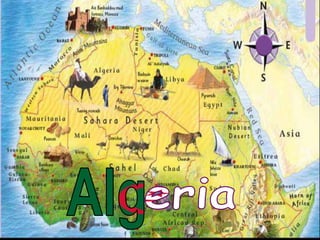The document provides background information on Algeria. It begins with a fact file that lists key details about Algeria such as its capital, population, languages, and leadership. It then discusses Algeria's flag, anthem, and national symbols. The document proceeds to describe Algeria's geography, climate, vegetation, wildlife, agriculture, economy, provinces, demographics, culture, and transportation system. It provides an overview of the major regions and natural resources of Algeria.




































